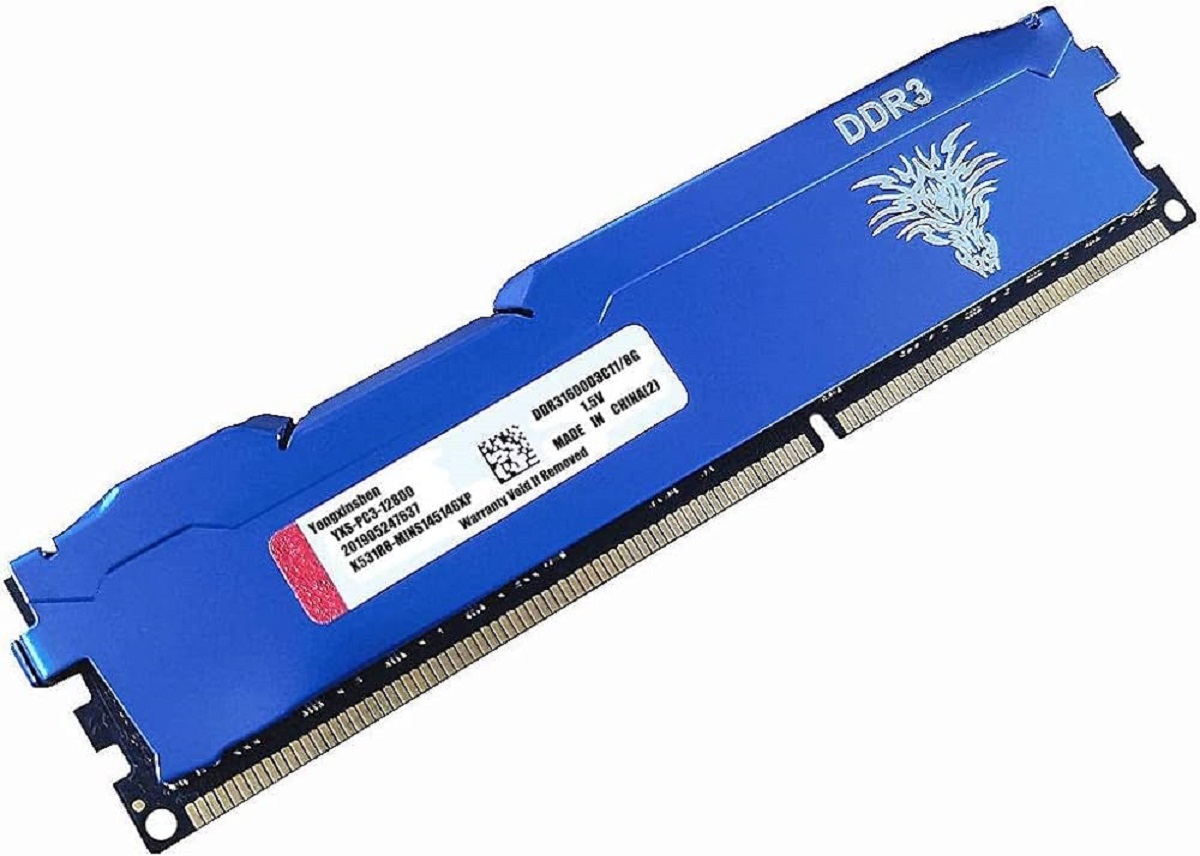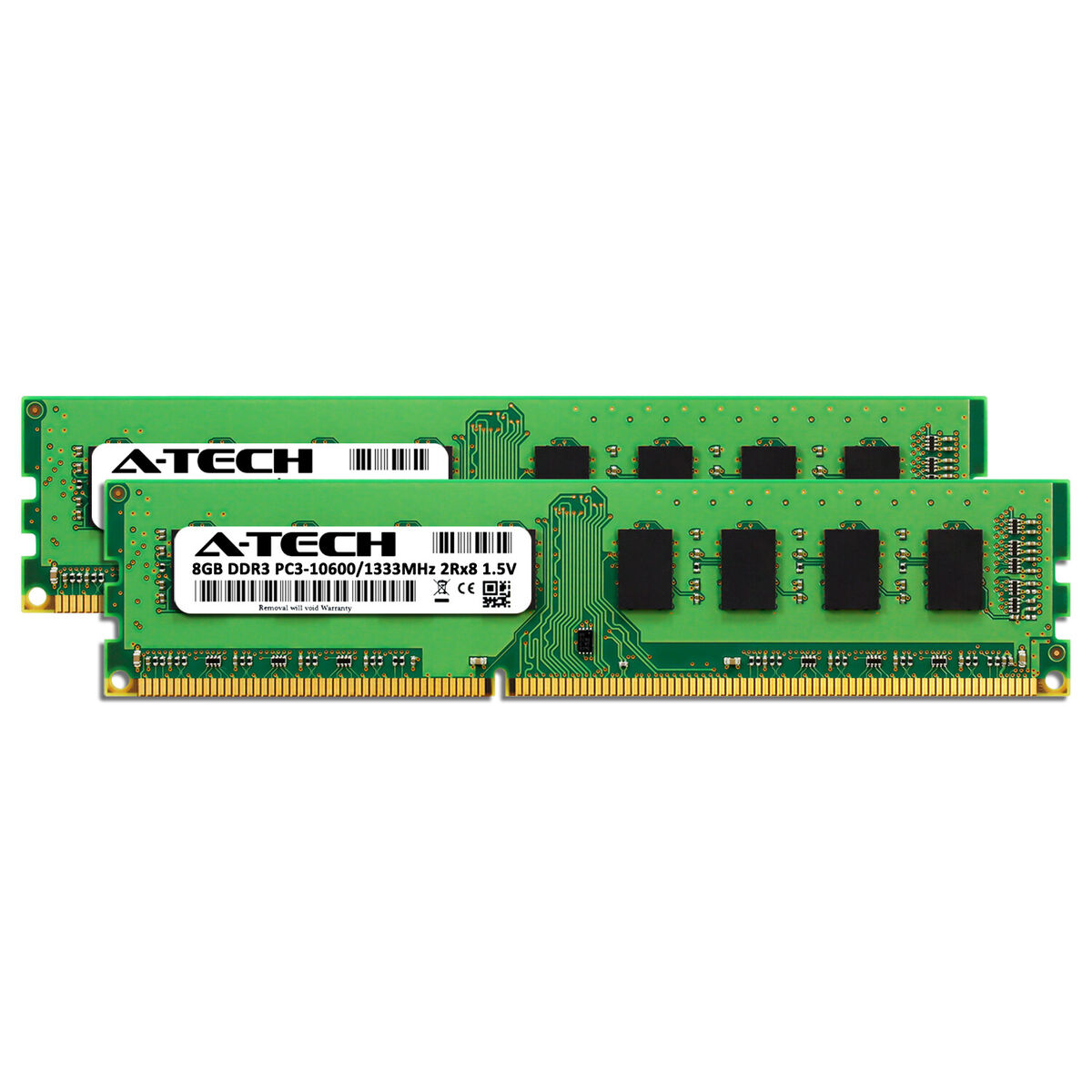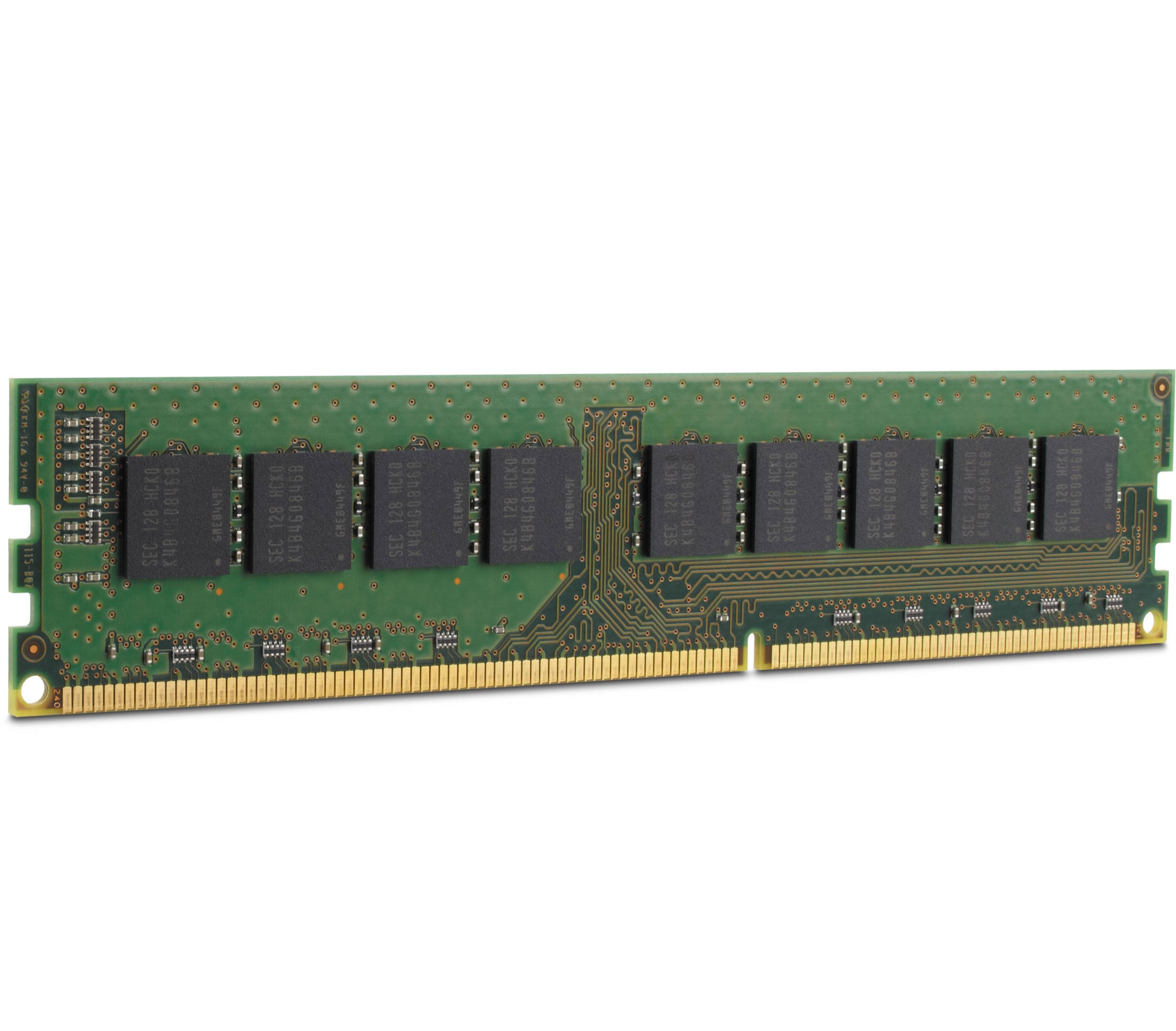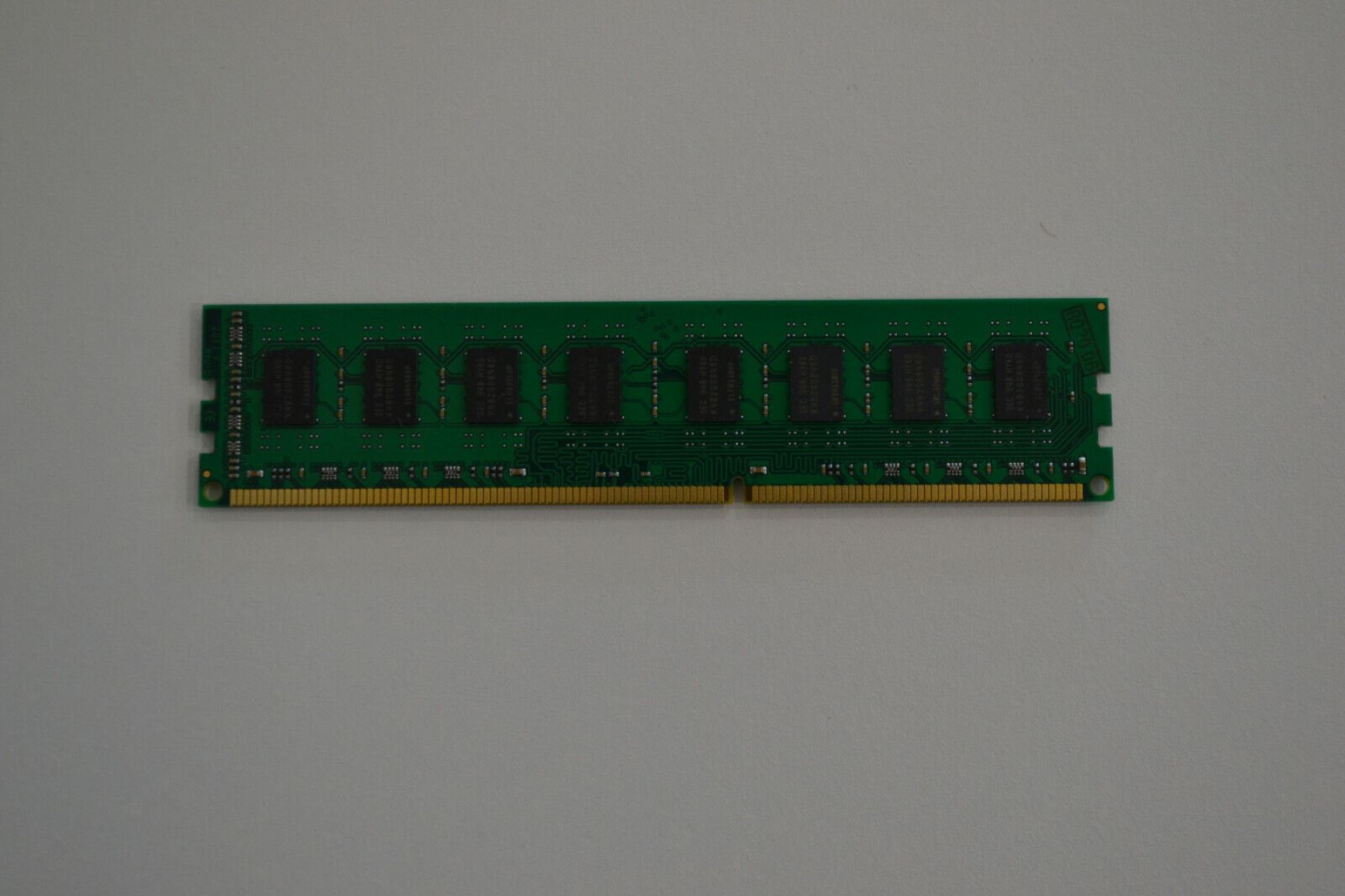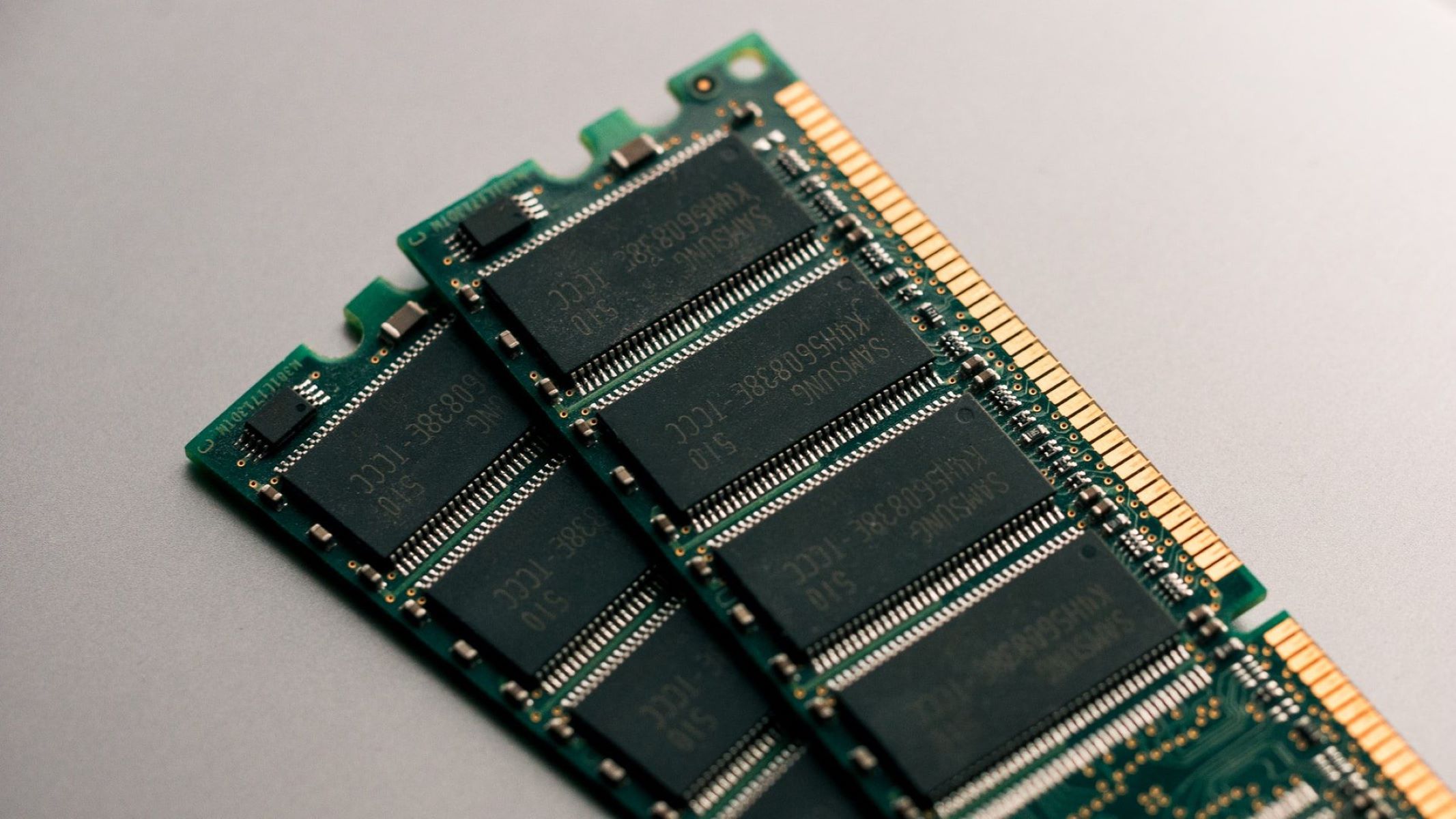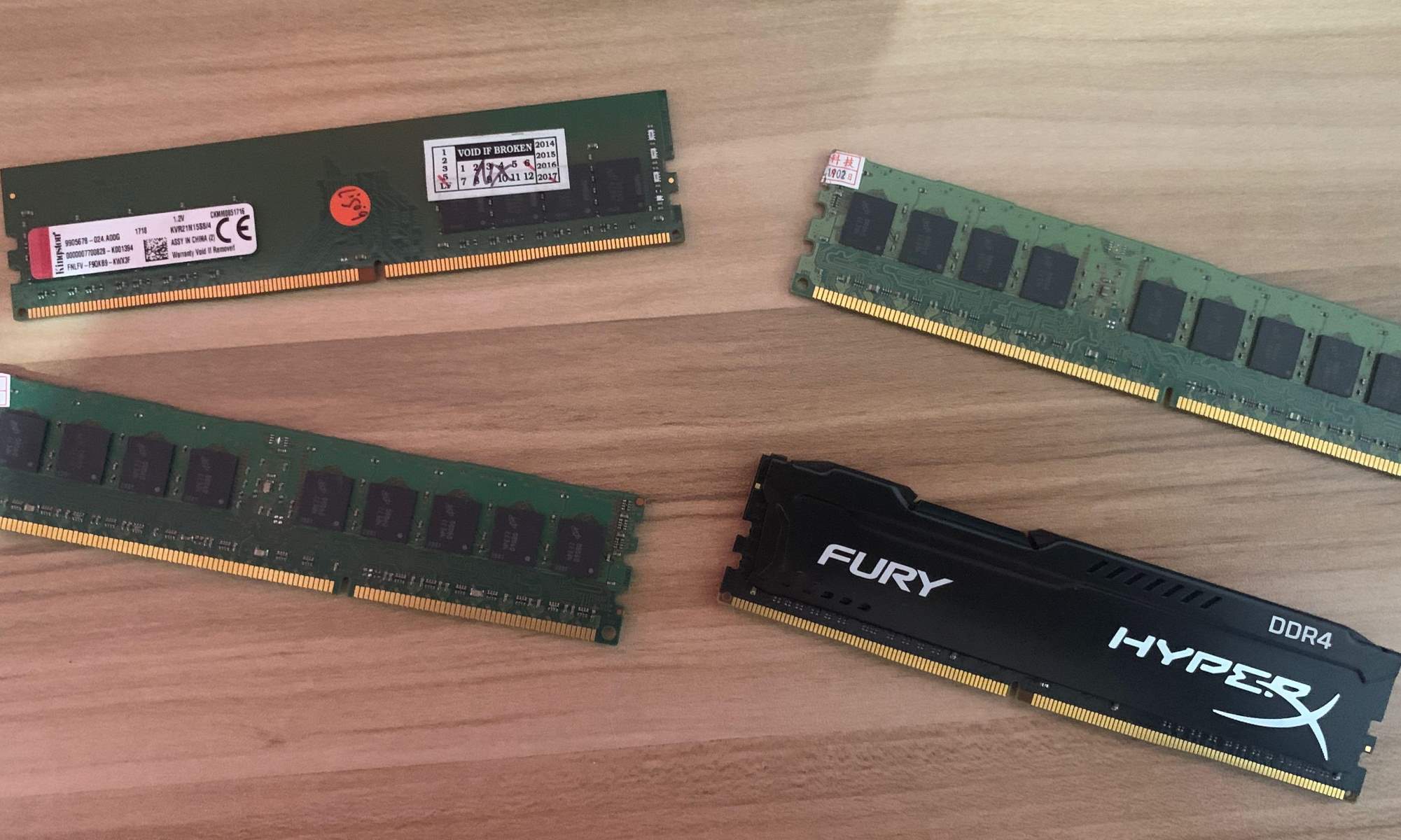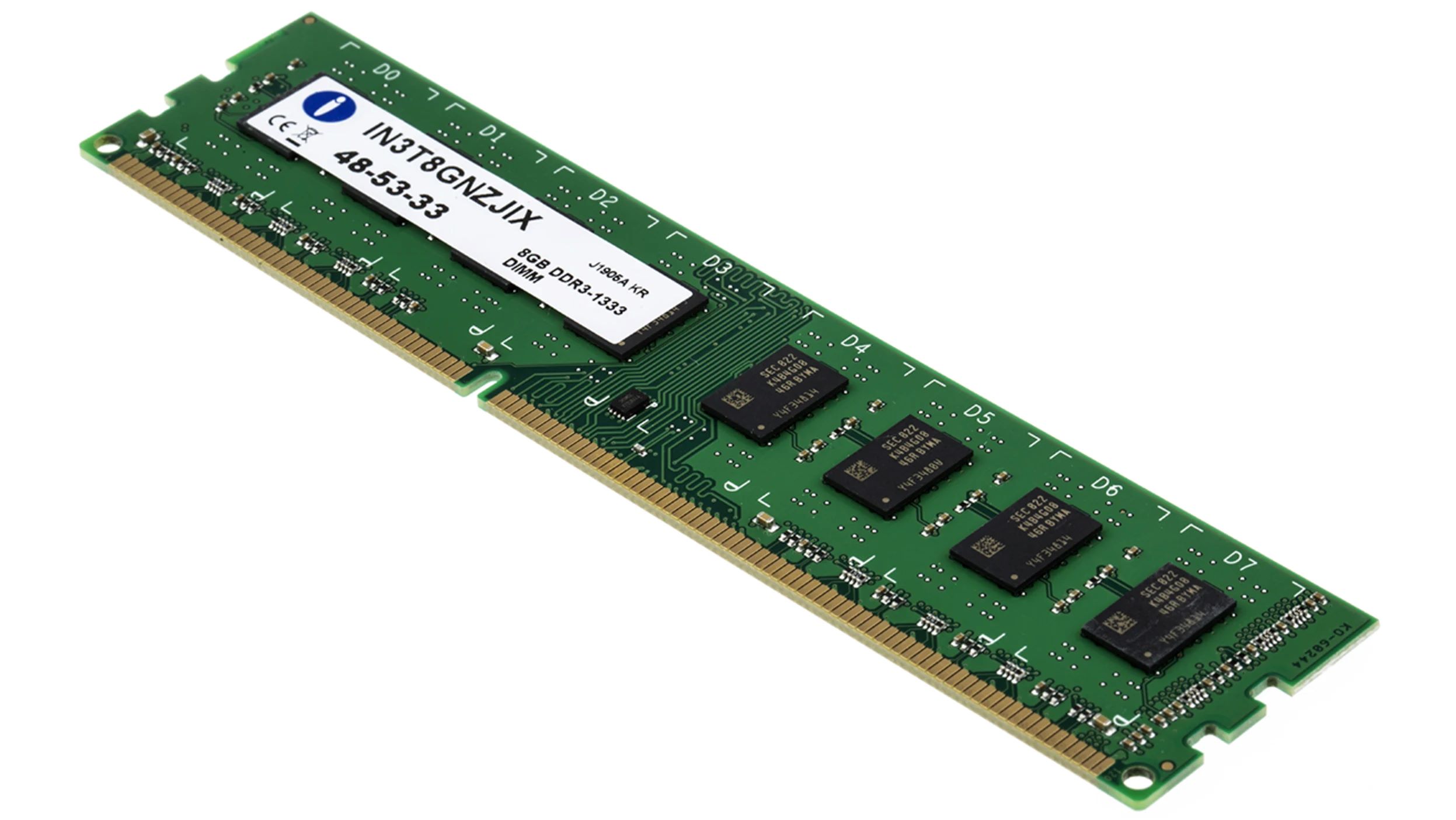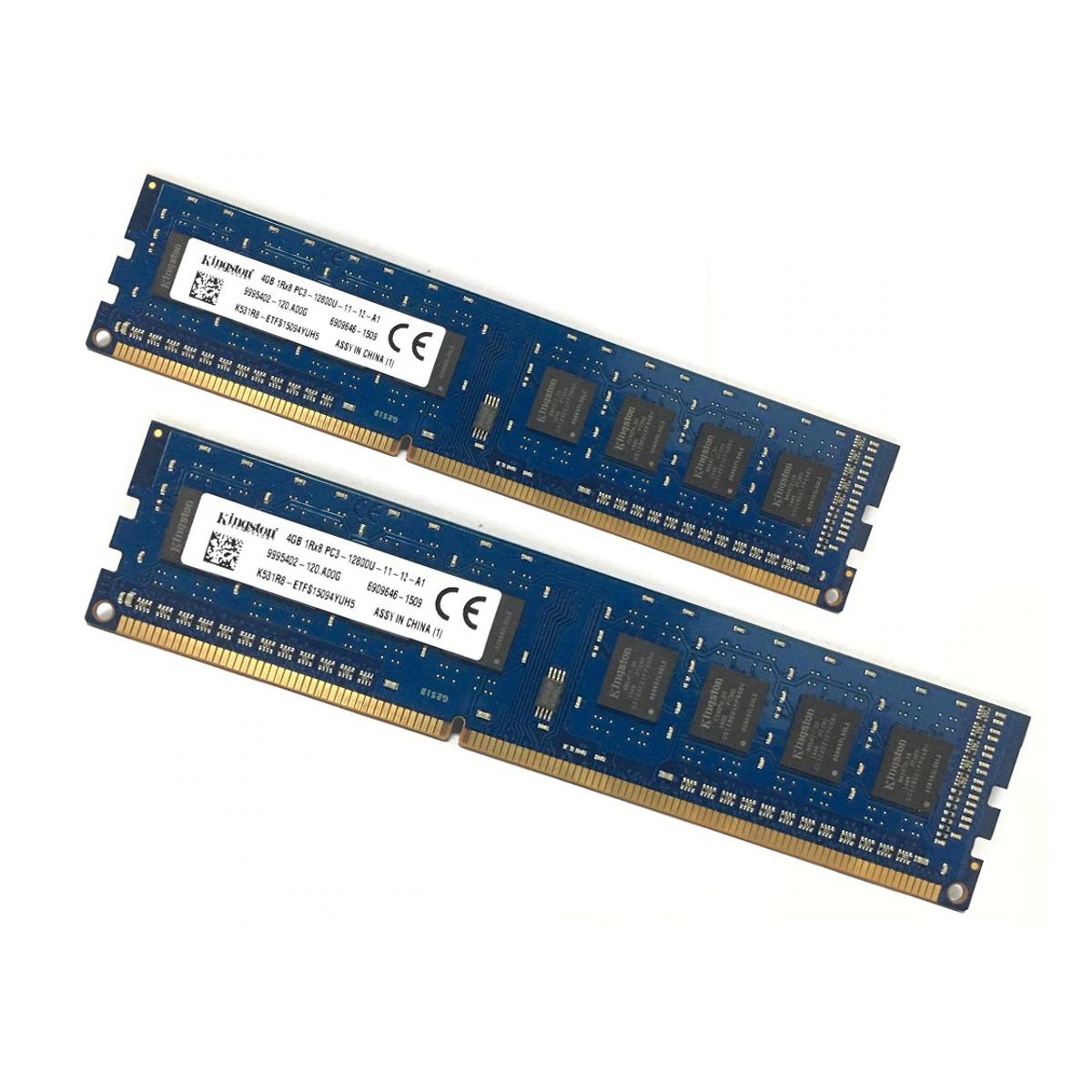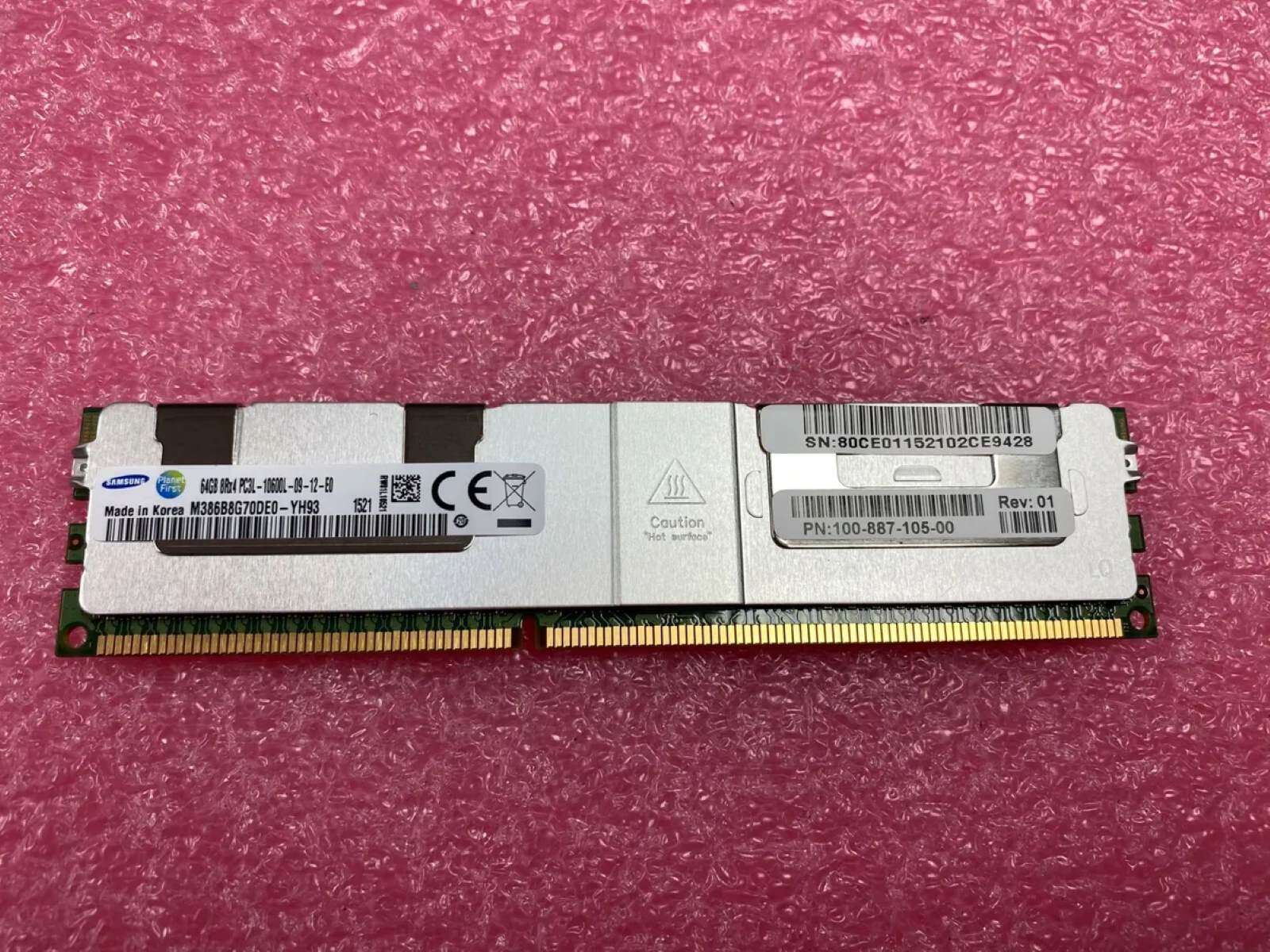Introduction
In the world of computer hardware, abbreviations and acronyms are thrown around left and right, often leaving us bewildered and confused. One such term that frequently pops up when discussing computer memory is “PC3.” You might have come across this term when shopping for RAM or reading about system specifications. But what exactly does the PC3 number mean for RAM? In this article, we will dive into the world of PC3 and explore its significance in the realm of computer memory.
Random Access Memory (RAM) plays a crucial role in the performance of a computer. It functions as temporary storage, allowing the processor to quickly access and manipulate data. When the computer is powered off, RAM is wiped clean, making it different from more permanent forms of storage like hard disk drives or solid-state drives. Understanding the specifications of RAM is important when upgrading or building a computer, and the PC3 number is one such specification that requires attention.
At its core, the PC3 number refers to the type of memory module and indicates the compatibility between the RAM and the motherboard. PC3 is part of the DDR3 memory technology, which stands for Double Data Rate 3. DDR3 is the third generation of DDR RAM and exhibits improvements in performance and power consumption compared to its predecessors.
The PC3 specification is often displayed alongside the clock speed of the RAM module, such as PC3-12800 or PC3-10600. It signifies the maximum data transfer rate that the RAM is capable of achieving. The number after the hyphen indicates the speed in megabytes per second (MB/s). For example, PC3-12800 has a maximum transfer rate of 12,800 MB/s, while PC3-10600 has a transfer rate of 10,600 MB/s.
What is PC3?
PC3, also known as DDR3, stands for Double Data Rate 3. It is a type of memory technology that is commonly used in computer systems. PC3 is the third generation of DDR RAM and offers several improvements over its predecessors.
PC3 memory modules have a higher data transfer rate and improved efficiency compared to older generations. This means that they can deliver data to the processor at a faster speed, resulting in improved system performance. The PC3 specification is typically displayed alongside the clock speed of the RAM module, such as PC3-12800 or PC3-10600, indicating the maximum data transfer rate.
One of the key features of PC3 is its higher bandwidth. It allows for more data to be transferred at a given time, which is crucial for demanding tasks such as gaming, video editing, and running multiple applications simultaneously. With PC3 memory, you can experience smoother and more responsive computing, especially when handling resource-intensive tasks.
Another advantage of PC3 is its improved power efficiency. PC3 modules operate at lower voltages compared to DDR2 RAM, resulting in reduced power consumption. This not only contributes to environmental sustainability but also helps in keeping the system cooler, which can be beneficial for overall system stability and longevity.
PC3 memory modules are widely available and compatible with various computer systems. However, it is crucial to ensure that your motherboard supports PC3 before purchasing and installing the RAM. Consult your motherboard manual or manufacturer’s specifications to verify compatibility.
In summary, PC3 or DDR3 is an advanced memory technology that offers higher data transfer rates, improved power efficiency, and increased bandwidth compared to previous generations. It is a popular choice for computer enthusiasts, gamers, and professionals looking to enhance their system’s performance and experience. When upgrading or building a computer, considering PC3 RAM modules can help achieve faster processing speeds and a more efficient overall system.
How does PC3 relate to RAM?
PC3 is a specification that specifically relates to the type of RAM, namely DDR3 memory modules. RAM, or Random Access Memory, is a crucial component in a computer system that stores data temporarily for quick access by the processor. When it comes to understanding how PC3 relates to RAM, it is important to look at the compatibility and performance aspects.
PC3 specifies the technology and standards used in the design and manufacturing of DDR3 memory modules. It indicates the maximum data transfer rate that the RAM module can achieve. This transfer rate is crucial in determining how quickly the RAM can provide data to the processor, affecting overall system performance.
The PC3 specification works in conjunction with other specifications of the RAM module, such as clock speed and timings. These factors combined determine the overall speed and efficiency at which the RAM operates. PC3 memory modules are designed to be compatible with motherboards that support DDR3 technology, ensuring a seamless connection between the RAM and the system’s architecture.
PC3 also specifies the voltage requirements for DDR3 memory modules. DDR3 RAM operates at lower voltage levels compared to its predecessors, resulting in improved power efficiency. It helps in reducing power consumption and heat generation, which can have a positive impact on the overall system’s stability and longevity.
It is important to note that PC3 is not the only specification to consider when choosing RAM for your system. Other factors, such as capacity, number of modules, and compatibility with the motherboard, should also be taken into account. PC3 serves as a crucial piece of information to ensure that you select the appropriate DDR3 RAM modules for your system’s requirements and compatibility.
In summary, PC3 is a specification that relates specifically to DDR3 RAM. It determines the maximum data transfer rate and voltage requirements for DDR3 memory modules. By understanding the PC3 specification, you can choose the right RAM for your system, ensuring compatibility and optimizing overall performance.
Understanding RAM Specifications
When it comes to choosing the right RAM for your computer system, understanding the various specifications is essential. RAM specifications not only determine compatibility but also play a significant role in the performance and efficiency of your system. Here are some key specifications to consider:
- Capacity: RAM capacity refers to the amount of memory that can be stored in the module. It is typically measured in gigabytes (GB) and determines how much data the RAM can handle at a given time. Higher capacities allow for smoother multitasking and running memory-intensive applications.
- Type: RAM comes in different types, such as DDR, DDR2, DDR3, DDR4, and DDR5. Each generation offers improved performance and efficiency. It is important to choose RAM that is compatible with your motherboard’s memory slots and supports the desired technology.
- Speed: RAM speed, measured in megahertz (MHz), indicates how quickly the RAM can transfer data. Higher clock speeds result in faster data access and processing. It is crucial to choose RAM with a speed supported by your motherboard to ensure optimal performance.
- Timings: RAM timings, such as CAS latency, indicate the delay in sending data from the RAM to the processor. Lower timings result in faster data transfer and improved system responsiveness. It is important to consider both speed and timings to achieve the best performance.
- Voltage: RAM voltage refers to the power requirements of the memory module. Lower voltage RAM typically offers increased power efficiency and reduced heat generation. It is important to choose RAM that is compatible with your motherboard’s voltage specifications.
Understanding these specifications will help you make informed decisions when selecting RAM for your system. It is crucial to consider your system’s requirements, motherboard compatibility, and the workload you plan to handle. Whether you’re a gamer, a content creator, or a business professional, choosing the right RAM specifications can significantly impact your system’s performance and overall user experience.
What does the PC3 number mean?
The PC3 number, which is part of the DDR3 memory technology, indicates the maximum data transfer rate of the RAM module. It signifies the peak amount of data that can be sent from the RAM to the processor within a given timeframe. This number is crucial in determining the RAM’s performance capabilities and compatibility with the motherboard.
The PC3 number is displayed alongside the clock speed of the RAM module, such as PC3-12800 or PC3-10600. The number after the hyphen indicates the maximum transfer rate in megabytes per second (MB/s). For example, PC3-12800 has a maximum transfer rate of 12,800 MB/s, while PC3-10600 has a transfer rate of 10,600 MB/s.
It’s important to note that the PC3 number represents the theoretical maximum transfer rate and does not necessarily reflect real-world performance. Actual data transfer speeds can be influenced by various factors, including the overall system configuration, CPU limitations, and the workload being performed.
When selecting RAM for your system, it is advisable to consider the PC3 number in relation to your specific requirements. Higher PC3 numbers generally indicate faster data transfer rates and potentially better performance, especially for memory-intensive tasks like gaming, video editing, or running multiple applications simultaneously. However, it is crucial to ensure that your motherboard supports the designated PC3 value to achieve optimal compatibility and functionality.
Additionally, it’s worth mentioning that different PC3 variations may be available, such as PC3L for low-voltage RAM modules. PC3L operates at a reduced voltage compared to standard PC3, resulting in lower power consumption and potentially improved efficiency. If your system or motherboard supports PC3L, it can be a suitable choice for energy-conscious users or those seeking to minimize heat generation.
In summary, the PC3 number specifies the maximum data transfer rate of DDR3 RAM modules. Understanding this number is essential when selecting RAM for your system, as it directly impacts performance and compatibility. Higher PC3 numbers generally indicate faster transfer rates, but it’s important to consider factors like motherboard support and specific workload requirements to make the best choice for your system’s needs.
What are the different PC3 variations?
Within the PC3 category, there are different variations that offer varying specifications and features. These variations are designed to cater to different requirements and system configurations. Let’s explore some of the common PC3 variations:
- PC3-8500: Also known as DDR3-1066, this variation has a transfer rate of 8500 MB/s. It is one of the slower PC3 variations and is suitable for basic computing tasks and budget-oriented systems.
- PC3-10600: Commonly referred to as DDR3-1333, this variation has a transfer rate of 10600 MB/s. It offers a good balance of performance and affordability, making it suitable for a wide range of applications and moderate workloads.
- PC3-12800: Also known as DDR3-1600, this variation supports a transfer rate of 12800 MB/s. It offers higher performance compared to PC3-10600 and is well-suited for gaming, multimedia, and more demanding applications.
- PC3-14900: Also referred to as DDR3-1866, this variation takes the transfer rate up to 14900 MB/s. It offers even higher performance than PC3-12800 and is suitable for power users, enthusiasts, and professionals who require the utmost performance from their systems.
- PC3L: This variation, often denoted as PC3L-XXXXX, is designed for low-voltage operation. It operates at a lower voltage compared to standard PC3 modules, resulting in reduced power consumption and potentially improved energy efficiency. PC3L modules are suitable for systems that prioritize power savings and generate less heat.
These are just a few examples of the PC3 variations available in the market. It’s important to note that the specific PC3 variation supported by your system will depend on your motherboard’s compatibility and specifications. It’s recommended to consult your motherboard manufacturer’s documentation or specifications to determine the supported PC3 variation and make an informed decision when purchasing RAM.
It’s worth noting that while the variations mentioned here are common, manufacturers may offer additional PC3 variations with different transfer rates and features. As technology advances, newer PC3 variations may be introduced, providing even higher performance and more options for users to choose from.
In summary, there are multiple PC3 variations available, each offering different transfer rates and features. From PC3-8500 to PC3-14900, these variations cater to various computing needs and budgets. Additionally, the PC3L variation provides a low-voltage option for energy-conscious systems. Understanding the different PC3 variations helps in selecting the right RAM for your system, considering your specific requirements and motherboard compatibility.
How does PC3 affect performance?
The PC3 specification plays a crucial role in the overall performance of a computer system. It directly impacts the data transfer rate of the RAM module, which in turn affects the speed and efficiency of various tasks and applications. Here’s how PC3 affects performance:
1. Data transfer rate: PC3 determines the maximum data transfer rate of the RAM module, measured in megabytes per second (MB/s). Higher PC3 numbers signify faster transfer rates, enabling the RAM to quickly provide data to the processor. This translates into improved system responsiveness, faster application loading times, and smoother multitasking.
2. Bandwidth: PC3’s higher data transfer rates result in increased bandwidth, allowing for more data to be transferred simultaneously. This is particularly beneficial when working with memory-intensive tasks, such as video editing, graphic design, or running virtual machines. A higher PC3 value provides the necessary bandwidth to handle large datasets and demanding applications, enhancing overall performance.
3. Multi-tasking capabilities: PC3’s faster transfer rates enable the RAM to swiftly handle requests from multiple applications running simultaneously. This is especially important for users who frequently switch between various tasks, such as web browsing, document editing, media playback, and more. With a higher PC3 value, the RAM can handle these requests efficiently, reducing lag and ensuring a smooth user experience.
4. Gaming performance: Gamers can benefit significantly from a higher PC3 value. The faster transfer rates allow for quicker loading times, smoother gameplay, and improved frame rates. PC3’s impact on performance becomes especially noticeable in graphics-intensive games that require a lot of memory bandwidth for rendering high-quality visuals and seamless gameplay.
5. Overall system efficiency: PC3’s higher performance capabilities contribute to an overall efficient system. The faster data transfer rates and increased bandwidth result in reduced wait times, improved system responsiveness, and efficient resource utilization. This can lead to a more productive and enjoyable computing experience across various applications and tasks.
It is important to note that while PC3 directly affects RAM performance, other factors like CPU performance, storage speeds, and system architecture also play a role in determining overall system performance. It is crucial to have a balanced system configuration that complements each component for optimal performance.
In summary, the PC3 specification influences RAM performance by determining the maximum data transfer rate and bandwidth. Higher PC3 values result in faster transfer rates, increased bandwidth, improved multitasking capabilities, enhanced gaming performance, and overall system efficiency. When selecting RAM, considering the PC3 value is crucial to ensure optimal performance and compatibility with your system.
Choosing the right PC3 value for your system
Selecting the appropriate PC3 value for your system is crucial to ensure optimal performance and compatibility. Consider the following factors when choosing the right PC3 value:
- System requirements: Assess the specific requirements of your system. Determine the type of tasks you will be performing, whether it’s basic office work, multimedia editing, gaming, or heavy multitasking. More demanding tasks generally benefit from higher PC3 values that offer faster data transfer rates and increased bandwidth.
- Motherboard compatibility: Check your motherboard’s specifications and verify the PC3 value it supports. Some motherboards may have limitations on the maximum PC3 value they can handle. Ensure that the RAM you choose falls within the supported PC3 range to guarantee compatibility and proper functioning.
- Budget considerations: Determine your budget for RAM. Higher PC3 values typically come with a higher price tag due to their increased performance capabilities. If you have a limited budget, consider striking a balance between your system’s requirements and the available options to get the best performance for your investment.
- Future upgradeability: Consider your plans for future system upgrades. If you anticipate upgrading other components, such as the CPU or graphics card, that may require more RAM bandwidth, it is wise to choose a higher PC3 value to cater to those future upgrades. This future-proofing strategy can help you avoid the need for a RAM upgrade down the line.
- Manufacturer reliability and warranties: Research the reputation and reliability of RAM manufacturers. Opt for reputable brands that offer reliable products and good customer support. Additionally, consider the warranty provided with the RAM modules to ensure you are covered in case of any issues.
By considering these factors, you can make an informed decision when selecting the right PC3 value for your system. Remember that the PC3 value should align with your system’s requirements, motherboard compatibility, budget, and future upgrade plans. It is advisable to consult with experts or check online forums for specific recommendations based on your system configuration and intended usage.
In summary, choosing the right PC3 value involves assessing the system’s requirements, motherboard compatibility, budget considerations, future upgradability, and the reliability of RAM manufacturers. By considering these factors, you can make a well-informed decision that ensures optimal performance and compatibility for your system.
Conclusion
Understanding the significance of the PC3 number for RAM is essential when it comes to choosing the right memory module for your computer system. PC3, as part of the DDR3 memory technology, indicates the maximum data transfer rate and compatibility between the RAM and motherboard.
With a higher PC3 value, you can experience faster data transfer rates, increased bandwidth, and improved system performance. This is especially beneficial for memory-intensive tasks such as gaming, multimedia editing, and running multiple applications simultaneously. However, it is important to ensure compatibility with your motherboard by checking its specifications and supported PC3 values.
When selecting RAM for your system, consider factors like system requirements, motherboard compatibility, budget, future upgradability, and the reputation of RAM manufacturers. This will help you make an informed decision and choose the right PC3 value that meets your specific needs.
Ultimately, selecting the right PC3 value ensures optimal performance, system efficiency, and a seamless computing experience. Remember to strike a balance between your system’s requirements and budget, ensuring that the chosen RAM modules are both compatible with your system and capable of meeting your performance expectations.
With a better understanding of PC3 and its impact on RAM performance, you can confidently make informed decisions when it comes to upgrading or building your computer system. By choosing the right PC3 value, you can unlock the full potential of your system and enjoy a smooth, responsive, and efficient computing experience.







